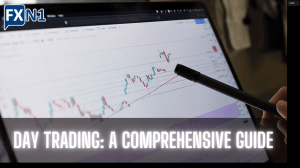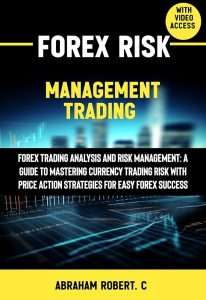Understanding Forex Trading Hours: A Comprehensive Guide
Unlock the secrets of Forex trading hours! Learn how 24/5 trading impacts strategies, risk management, and maximizing profit opportunities in this comprehensive guide. Dominate the global market.
The foreign exchange market, or Forex, operates 24 hours a day, five days a week․ This continuous trading cycle presents both immense opportunities and significant challenges․ Understanding the nuances of Forex trading hours is paramount for success․ Effective trading strategies depend heavily on this knowledge, allowing traders to capitalize on market trends and minimize risk․ This comprehensive guide will delve into the intricacies of global Forex trading hours, providing valuable insights for traders of all experience levels․
Understanding the Global Forex Market’s Continuous Cycle
Unlike traditional stock markets that operate within specific time zones, the Forex market is decentralized and operates globally․ This means that trading never truly stops․ As one market closes, another opens, creating a seamless 24-hour trading cycle․ This continuous nature offers advantages such as increased liquidity and greater flexibility for traders, but it also necessitates a keen understanding of market dynamics across different time zones․
The Forex market’s continuous nature stems from the fact that it’s a network of banks, financial institutions, and individual traders interacting globally․ This interconnectedness ensures that there’s always a market open somewhere in the world, providing consistent opportunities for trading․ However, this also means that market conditions can fluctuate rapidly and unpredictably, requiring constant vigilance and adaptability from traders․
Major Trading Centers and Their Operating Hours
The Forex market is dominated by several key trading centers, each with its own operating hours․ These centers influence trading volume and liquidity throughout the 24-hour cycle․ Understanding these centers and their respective trading hours is crucial for maximizing trading opportunities and timing your trades effectively․
- Sydney: Typically opens at 5:00 PM GMT on Sunday and closes at 2:00 AM GMT on Monday․
- Tokyo: Generally opens at 12:00 AM GMT on Monday and closes at 9:00 AM GMT on Monday․
- London: Usually opens at 8:00 AM GMT and closes at 5:00 PM GMT․
- New York: Typically opens at 1:00 PM GMT and closes at 8:00 PM GMT․
The overlap between these trading centers creates periods of high liquidity and volatility, presenting excellent opportunities for traders․ For example, the overlap between the London and New York sessions is often characterized by significant price movements․ Traders should be prepared for these periods of heightened activity․
Optimal Trading Times and Strategies
While the Forex market operates 24/7, not all hours are created equal․ Certain periods experience higher trading volumes and volatility than others․ Understanding these periods allows traders to optimize their strategies and maximize their chances of success․ This section will delve into identifying these optimal trading times and exploring corresponding strategies․
High Volatility Periods: Opportunities and Risks
The overlaps between major trading centers often lead to periods of high volatility․ While this presents increased opportunities for profit, it also entails elevated risk․ Traders should exercise caution during these times and employ appropriate risk management strategies․ Aggressive trading techniques might be appropriate for experienced traders, but beginners should approach these periods with measured caution․
Careful analysis of market trends and news events is crucial during periods of high volatility․ Staying informed about economic releases and geopolitical events can significantly enhance a trader’s ability to anticipate market movements․ Robust risk management strategies, including stop-loss orders and position sizing, are essential to mitigate potential losses․
Low Volatility Periods: A Time for Careful Planning
Conversely, periods with lower volatility can be ideal for implementing longer-term strategies․ These periods offer opportunities for methodical analysis and careful planning, allowing traders to identify potential trends and make informed decisions without the pressure of rapid price fluctuations․ This measured approach can be particularly beneficial for risk-averse traders․
Leveraging Market Overlaps for Maximum Profit
The overlaps between major trading centers present unique opportunities for traders․ By understanding how these overlaps affect market liquidity and volatility, traders can develop strategies that exploit these specific times․ Effective use of technical analysis and fundamental analysis can enhance trading success during these periods․ The key is to recognize patterns and adapt strategies accordingly․
For instance, the London-New York overlap often sees significant price movements due to the combined trading volume from these two major centers․ Traders who can accurately predict these movements can potentially generate substantial profits․ However, it’s vital to remember that this high volatility also carries significant risk․ Thorough research and a strong risk management plan are essential․
The Importance of Time Zone Awareness
A critical aspect of successful Forex trading is a keen awareness of different time zones․ Ignoring time zone differences can lead to missed opportunities and costly mistakes․ Traders must be mindful of the opening and closing times of various trading centers to effectively manage their trading activities and optimize their strategies․
Understanding time zone differences is crucial for scheduling trades, interpreting market news, and adapting strategies to current market conditions․ Failure to account for time zones can lead to inaccurate analysis and poor trading decisions․ It’s essential to utilize reliable time zone conversion tools to ensure accuracy and avoid any potential misunderstandings․
Utilizing Trading Platforms and Tools
Most reputable Forex trading platforms provide tools and features that assist traders with time zone management and market analysis․ These platforms often offer real-time market data, charts, and economic calendars, allowing traders to stay informed about global market conditions․ These tools are invaluable for efficient trading and informed decision-making․
- Economic Calendars: These calendars provide schedules of important economic announcements and events, which can significantly impact currency prices․
- Live Charts: Real-time charts allow traders to monitor price movements and identify trends in different markets․
- Technical Indicators: Various technical indicators assist traders in analyzing price patterns and predicting future movements․
By utilizing these tools effectively, traders can gain a significant edge, enabling them to make more informed decisions and increase their chances of success in the Forex market․ Regularly reviewing and updating your trading strategies based on market conditions is also key to long-term success․
Successful Forex trading requires a combination of knowledge, skill, and discipline․ Understanding the nuances of Forex trading hours is a fundamental component of this equation․ By mastering these complexities, traders can significantly improve their trading performance and increase their potential for profit․ Consistent learning, adaptation, and disciplined risk management are crucial to navigate this dynamic market successfully․
The Forex market’s 24-hour cycle presents both extraordinary opportunities and significant challenges․ By diligently understanding the dynamics of global trading hours, employing appropriate strategies, and utilizing available tools, traders can effectively navigate this complex environment and achieve their trading goals․ Remember, thorough research, continuous learning, and disciplined risk management remain the cornerstones of successful Forex trading․
This guide provides a solid foundation for understanding Forex trading hours; However, consistent self-education, practice, and adaptability are essential for long-term success․ Market conditions are ever-changing, requiring traders to remain flexible and responsive to new information and trends․ The journey to becoming a proficient Forex trader is a continuous process of learning and refinement․
Ultimately, successful Forex trading is not merely about understanding the hours of operation, but about mastering the entire ecosystem of global finance and adapting to its constant evolution․ Continuous learning and a commitment to staying informed are crucial for navigating this dynamic and ever-changing landscape․ Embrace the challenge, and the rewards can be significant․
Remember, trading always involves risk, and it’s essential to manage that risk effectively․ Never invest more than you can afford to lose, and always seek professional financial advice if needed․ The path to successful Forex trading requires dedication, perseverance, and a commitment to continuous learning․







